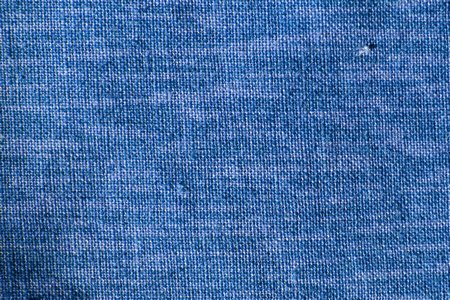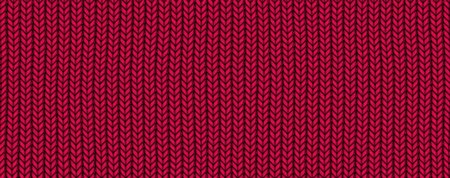Fabric Types:
In today’s modern textile sector, various types of fabric produced for woven, knit and non-woven fabric. This article has presented the total classification of fabric for woven, knit and non-woven.

There are mainly three types of fabric, which are in the below:
- Woven fabric,
- Knit or knitted fabric,
- Non-woven fabric.
All the above fabrics have explained in the following:
Woven fabric:
The fabrics which are produced by interlacing two sets of yarn i.e. war yarn and weft yarn by in is termed as woven fabric.
 |
| Fig: Woven fabric |
Types of Woven Fabric:
There are various types of woven fabrics produced in textile weaving sector which are mentioned in the following:
- Poplin fabric or broad cloth,
- Denim fabric, Pinpoint oxford fabric,
- Corduroy fabric,
- Chambray fabric,
- Crepe fabric,
- Oxford fabric,
- Melange fabric,
- Flannel fabric,
- Royal oxford cloth,
- Dobby fabric,
- Herringbone fabric Kashmir silk,
- Khadi fabric,
- Gabardine fabric.
Woven fabric is used for the below purposes:
- Jackets,
- Dress or blouses,
- Bridal satins,
- Lining fabrics,
- Stretch fabrics,
- Blanket binders,
- Shower curtain,
- Umbrellas.
The fabrics which are produced by interlacing one set of yarn are known as knit of knitted fabric. It should be noted here that, knit fabric and knitted fabric are same.
 |
| Fig: Knit fabric |
Types of Knit of Knitted Fabric:
There are so many knit fabrics produced in today’s modern textile knitting sector which are presented in the below:
- 100% cotton single jersey fabric,
- Burn out single jersey fabrics,
- 100% cotton double jersey fabrics,
- Lycra or spandex single jersey fabrics,
- Slub single jersey fabrics,
- Grey melange slub fabrics,
- Fleece fabrics,
- French terry fabrics,
- French terry slub fabrics,
- Grey melange fabrics,
- Micro or baby terry fabrics,
- Lacoste fabrics,
- Sequence fabrics
- French terry fabrics (inside brushed),
- Design terry fabrics,
- Pique fabrics,
- Pique slub fabrics,
- 1×1 Rib fabrics,
- 2×1 Rib fabrics.
Knit or knitted fabric is used for the following g purposes:
- Jersey fabric used for making T-shirt, Soft jacket and Coats.
- Interlock knits are suitable for evening wear and lingerie.
- Tricot fabric is used for bathing suits.
- Sweater knits can be used to make tops, sweater dresses and skirts.
This type of fabric is produced by connecting yarn with gummy or bonded materials.
 |
| Fig: Non-woven fabric |
Types of Non-Woven Fabric:
According to the technology of raw materials:
- Staple fibre non-woven,
- Filament fibre non-woven.
- Weft bonded,
- Dry bonded,
- Spun bonded.
- Durable,
- Semi-durable,
- Disposable.
- Water repellent,
- Flame retardant,
- Water absorbent.
Non-woven fabric is used for the below purposes:
- Coating substrates,
- Wipes,
- Filtration,
- Medical,
- Interlinings,
- Footwear,
- Garments,
- Hygiene etc.
Different Types of Fabrics and Their Uses:
Fabrics come in a wide variety, each with unique characteristics and specific uses. Below is a detailed overview of different types of fabrics and their common applications:
1. Cotton:
- Characteristics: Cotton is a natural fiber that is soft, breathable, and absorbent. It is also hypoallergenic and comfortable to wear.
- Uses: Cotton is widely used in everyday clothing, such as t-shirts, underwear, and jeans. It is also popular for home textiles like bed linens, towels, and curtains due to its comfort and durability.
2. Wool:
- Characteristics: Wool is a natural fiber known for its warmth, softness, and insulating properties. It is also moisture-wicking and naturally resistant to odors.
- Uses: Wool is commonly used in winter clothing such as sweaters, coats, and scarves. It is also used in carpets, blankets, and upholstery due to its warmth and durability.
3. Silk:
- Characteristics: Silk is a luxurious natural fiber known for its smooth texture, sheen, and strength. It is lightweight, breathable, and drapes beautifully.
- Uses: Silk is often used in high-end fashion for dresses, blouses, and scarves. It is also popular in home textiles like pillowcases and curtains due to its elegant appearance.
4. Linen:
- Characteristics: Linen is a natural fiber made from flax. It is strong, absorbent, and breathable, but tends to wrinkle easily.
- Uses: Linen is ideal for summer clothing like shirts, dresses, and trousers due to its breathability. It is also used in tablecloths, napkins, and bedding.
5. Polyester:
- Characteristics: Polyester is a synthetic fiber known for its strength, durability, and resistance to wrinkles and shrinking. It is also quick-drying and easy to care for.
- Uses: Polyester is used in a wide range of clothing, including sportswear, outerwear, and everyday garments. It is also found in home textiles like curtains, bedspreads, and upholstery.
6. Nylon:
- Characteristics: Nylon is a strong, elastic, and lightweight synthetic fiber. It is also resistant to abrasion and moisture.
- Uses: Nylon is commonly used in activewear, swimwear, and hosiery due to its stretch and durability. It is also used in industrial applications like ropes, seatbelts, and tents.
7. Rayon:
- Characteristics: Rayon is a semi-synthetic fiber made from cellulose. It has a soft, silky texture and drapes well. Rayon is breathable and absorbent but may wrinkle easily.
- Uses: Rayon is often used in dresses, blouses, and skirts due to its smooth drape. It is also used in home textiles like curtains and bedspreads.
8. Denim:
- Characteristics: Denim is a durable cotton fabric, typically woven in a twill pattern. It is known for its strength and rugged appearance.
- Uses: Denim is primarily used in jeans, jackets, and overalls. It is also used for casual wear and accessories like bags.
9. Velvet:
- Characteristics: Velvet is a soft, plush fabric with a dense pile. It has a luxurious feel and a rich appearance.
- Uses: Velvet is used in evening wear, dresses, and suits. It is also popular in home decor items like cushions, curtains, and upholstery.
10. Chiffon:
- Characteristics: Chiffon is a lightweight, sheer fabric with a delicate appearance. It is often made from silk, polyester, or nylon.
- Uses: Chiffon is ideal for evening gowns, blouses, and scarves. It is also used in bridal wear and as a decorative fabric in home textiles.
11. Spandex (Lycra/Elastane):
- Characteristics: Spandex is a synthetic fiber known for its exceptional elasticity. It is lightweight, durable, and resistant to sweat and oils.
- Uses: Spandex is commonly used in activewear, swimwear, and undergarments due to its stretchability and comfort.
12. Tweed:
- Characteristics: Tweed is a rough, woolen fabric with a soft, open texture. It is often woven in a variety of patterns and colors.
- Uses: Tweed is popular in outerwear like jackets, coats, and suits. It is also used in hats and bags.
13. Fleece:
- Characteristics: Fleece is a synthetic fabric, typically made from polyester, known for its warmth and softness. It is lightweight and breathable.
- Uses: Fleece is used in outdoor clothing like jackets, vests, and blankets. It is also popular in loungewear and sportswear.
14. Satin:
- Characteristics: Satin is a glossy fabric with a smooth surface and a dull back, usually made from silk or polyester. It is known for its lustrous appearance and smooth texture.
- Uses: Satin is commonly used in evening gowns, lingerie, and ties. It is also used in home textiles like bed linens and decorative pillows.
15. Lace:
- Characteristics: Lace is a delicate fabric made from yarn or thread in an open, web-like pattern. It is often used for its decorative and ornamental properties.
- Uses: Lace is used in dresses, lingerie, and bridal wear. It is also popular for home decor items like tablecloths and curtains.